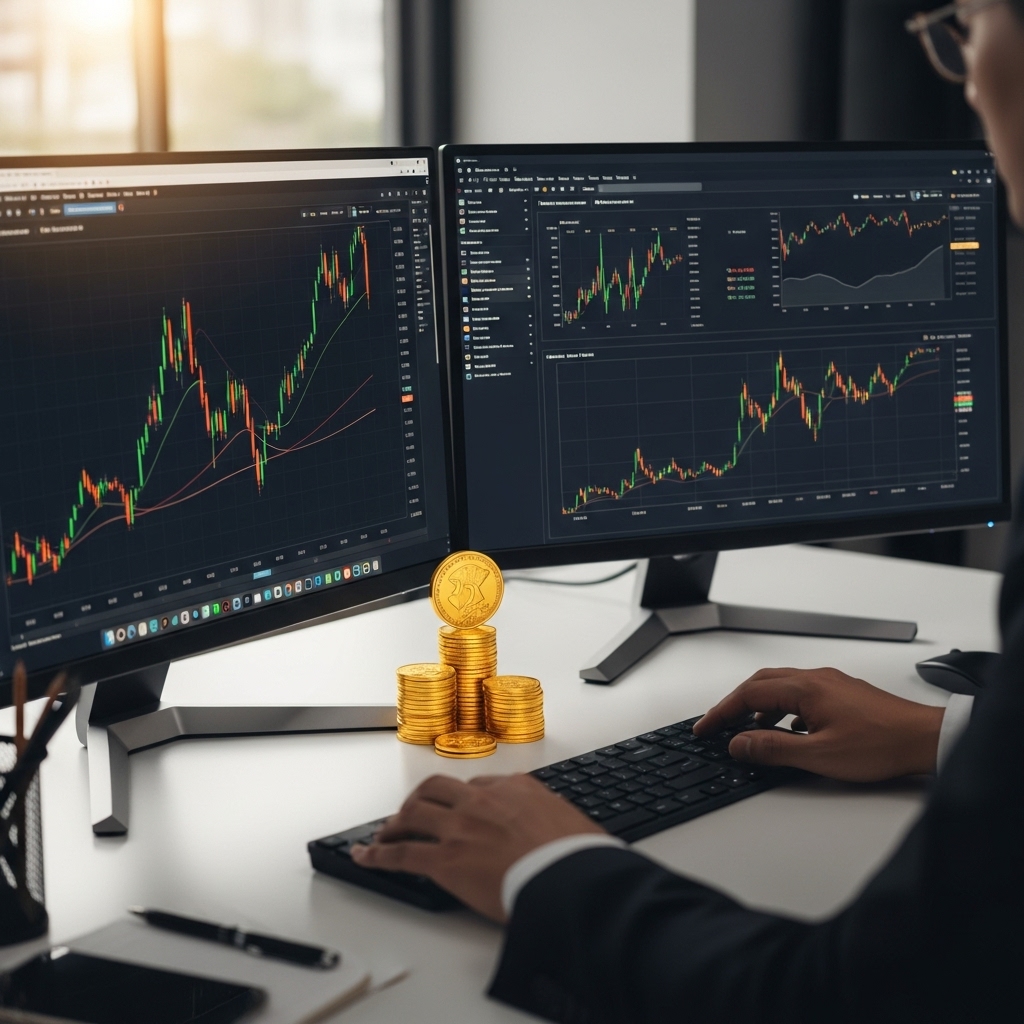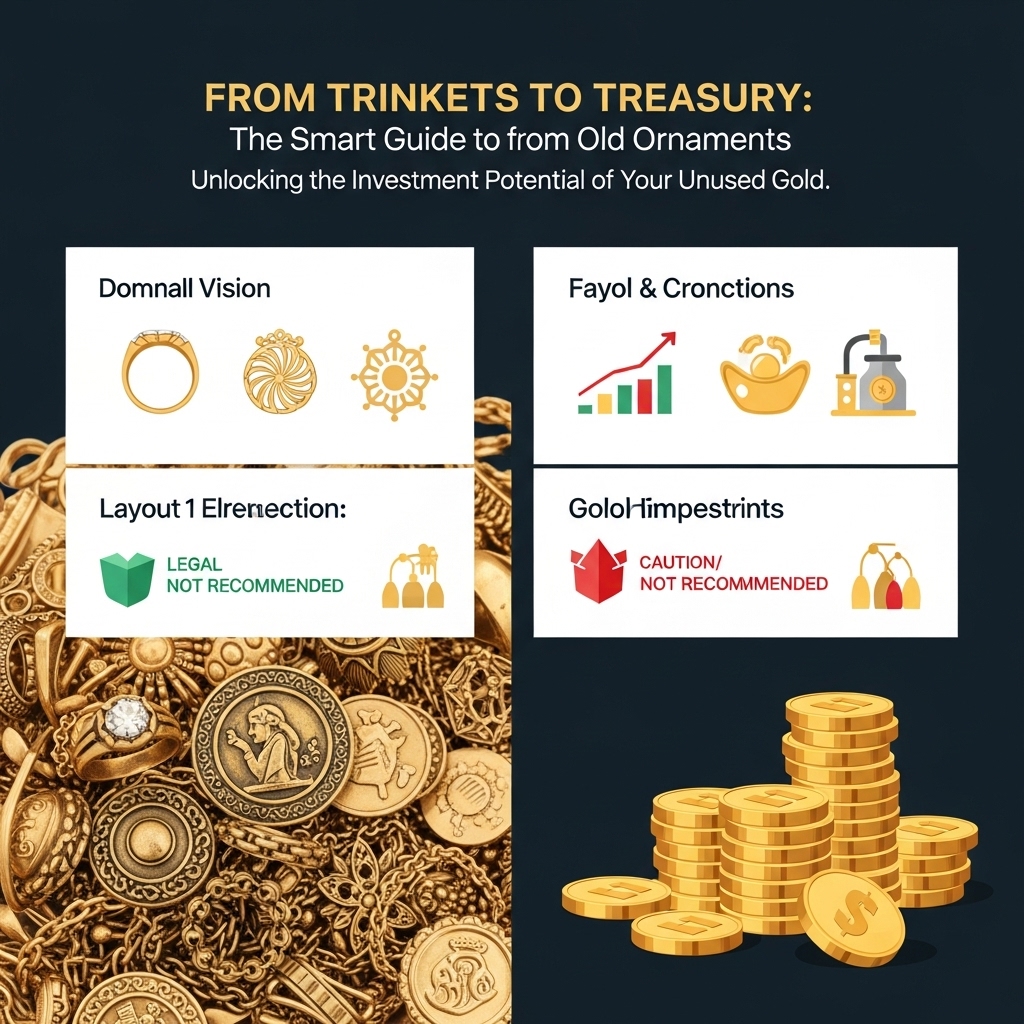Unlocking Hidden Value: Turning Family Heirlooms into Investment Gold
The allure of gold as a store of wealth is as enduring as the precious metal itself. In today’s dynamic market, where inflation anxieties and geopolitical uncertainties often drive investors toward safe-haven assets, gold has once again demonstrated its resilience, often outperforming traditional investments. But what if you could tap into a source of gold that’s been quietly residing in your own home? This post delves into the fascinating and potentially lucrative world of repurposing old gold ornaments into investment-grade gold coins. We’ll explore the legal framework surrounding this practice, from understanding purity standards to navigating official channels, and provide you with the essential best practices to ensure your transformed heirlooms are both legitimate and valuable.
For discerning gold investors, understanding every facet of the market is crucial. This isn’t just about acquiring bullion; it’s about optimizing your investment strategy and uncovering often-overlooked opportunities. By transforming sentiment-rich family pieces – that forgotten necklace or your grandmother’s wedding band – into recognized gold coins, you can potentially unlock significant financial benefits. This process can offer a unique way to add to your gold portfolio while preserving sentimental value, all while staying within legal boundaries and maximizing your returns. Join us as we navigate this intriguing intersection of heritage and finance, empowering you to make informed decisions about your gold investments.
Gold Market Analysis and Key Insights
Gold consistently proves its worth as an asset, particularly when considering converting old ornaments into standardized coins or bars. This section analyzes gold’s market dynamics as an investment.
Gold as a Safe-Haven Asset
Gold’s primary appeal as a safe-haven asset is evident during economic uncertainty, geopolitical instability, or market volatility. Investors flock to it as a reliable store of value, as it tends to maintain or appreciate when other assets decline, offering a critical hedge.
Inflation Hedge and Portfolio Diversifier
Historically, gold acts as an inflation hedge, preserving purchasing power when currencies depreciate. Its low correlation with traditional assets like stocks and bonds makes it an excellent portfolio diversifier, reducing overall risk and enhancing stability, especially during market downturns.
Current Gold Market Trends and Data:
The gold market currently exhibits elevated volatility influenced by several key factors. Interest rate expectations, particularly from major central banks, play a crucial role; higher rates can increase the opportunity cost of holding non-yielding gold. The strength of the U.S. dollar also impacts prices, as gold is dollar-denominated. Geopolitical tensions, conflicts, and global economic data continue to drive short-term price movements, though the long-term trend often points towards appreciation.
Investment Benefits and Considerations:
Investing in physical gold, such as coins, offers benefits like tangible ownership, high liquidity, and universal acceptance. However, considerations include secure storage costs, insurance, the premium over spot price for fabricated coins, and the necessity of verifying purity when converting old ornaments. Market volatility means potential short-term price fluctuations.
Expert Recommendations:
Financial experts recommend treating gold as a component of a well-diversified portfolio, typically allocating 5-15% of total assets. It’s crucial to purchase from reputable dealers or refiners to ensure purity and authenticity. Understand the buy-sell spread and avoid emotional trading. Consulting a financial advisor is highly recommended to align gold investments with individual financial goals, risk tolerance, and tax implications, ensuring a strategic approach to wealth preservation and growth.

Gold Investment Strategies and Options
Investing in gold extends beyond gold coins crafted from old ornaments; it encompasses a diverse range of options, each with unique considerations. Physical gold includes melted coins (which necessitate meticulous purity verification and assaying for investment purposes), recognized bullion coins (e.g., Krugerrands, American Eagles), and bars. These offer direct ownership, acting as a tangible hedge against inflation and economic instability, though they incur storage costs and may have varying liquidity depending on the form.
Alternatively, paper gold provides indirect exposure. Gold Exchange Traded Funds (ETFs) offer ease of trading, liquidity, and bypass physical storage concerns, closely tracking gold’s spot price. Gold mining stocks offer potential leveraged returns but introduce company-specific risks distinct from the metal itself.
For risk assessment and portfolio allocation, gold is typically viewed as a non-correlated asset that can enhance diversification, often comprising 5-10% of a balanced portfolio as a safe-haven during market downturns. However, gold itself is volatile and does not generate income.
When comparing investment methods, physical gold provides the security of direct ownership but can be less liquid; ETFs offer convenience and liquidity but introduce counterparty risk. Market timing gold purchases can be challenging; its price often strengthens during periods of high inflation or geopolitical uncertainty, or when the U.S. dollar weakens. Long-term investors often favor a dollar-cost averaging strategy to mitigate volatility rather than attempting to time the market perfectly, recognizing gold’s enduring role as a long-term store of value and wealth preservation.
Market Performance and Outlook
The market for converting old gold ornaments into standardized gold coins, as explored in ‘Gold Coins Made from Melting Old Ornaments: Legalities & Best Practices’, is directly influenced by gold’s broader market performance and consumer sentiment. Historically, gold has proven to be a resilient asset, especially during periods of economic uncertainty. Post-2008 and throughout the pandemic, gold prices saw significant appreciation, solidifying its role as a safe haven and an inflation hedge. This sustained upward trend inherently increases the appeal and financial viability of transforming less liquid ornamental gold into purer, more easily tradable coin formats.
Currently, high global gold prices, coupled with persistent inflationary concerns, are key market drivers. Consumers are increasingly motivated to unlock the intrinsic value of their unused or inherited jewellery, valuing the transparency and purity offered by professional coin-making services. This niche service sector directly benefits from robust underlying gold demand, amplified by ongoing geopolitical instability and currency fluctuations.
Looking ahead, the future outlook for gold remains strong, with predictions indicating continued demand as central banks diversify reserves and retail investors seek inflation protection. This positive trajectory is highly favourable for the melt and mint segment. Economic factors such as fluctuating interest rates (which can influence gold’s attractiveness as a non-yielding asset) and the US dollar’s strength will continue to be influential. However, ongoing global uncertainties and the enduring cultural preference for physical gold as an investment are expected to ensure sustained demand for both gold itself and the services facilitating its conversion into certified, preferred formats.
Frequently Asked Questions About Gold Investment
Is it legal to melt old gold ornaments into new coins?
Yes, generally, if the gold was legally acquired. The melting process itself is permissible, though large volumes might warrant source declaration for anti-money laundering (AML) purposes.
What are the purity and hallmarking considerations?
Old ornaments vary in purity. Conversion requires refining to a standard (e.g., 24K/999.9) and proper hallmarking by an authorized agency for authenticity and marketability.
Are there tax implications for converting ornaments into coins?
The conversion isn’t a taxable event itself. However, selling the new coins later for profit may incur capital gains tax based on the original ornament purchase price. Consult a tax advisor.
Where can I reliably get my old gold converted into coins?
Use reputable jewelers, specialized gold refiners, or government-approved assaying centers. Choose certified entities with transparent processes ensuring accurate weight and purity.
What are the main benefits and drawbacks of this process?
Benefits: Utilizes existing gold, potentially saving on new coin premiums, and creates a standardized, tradable asset.
Drawbacks: Loss of sentimental value, minor weight loss during refining, and reliance on the refiner’s integrity.

Final Thoughts on Gold Investment
Navigating the world of gold coins made from melted ornaments requires meticulous attention to detail. Key takeaways include verifying the intricate legalities of re-minting, ensuring authenticated purity through reputable assaying, and strictly dealing with transparent, trusted refiners or dealers. Your investment security fundamentally hinges on verifiable provenance and clear disclosure.
Our final recommendation for gold investors is to exercise extreme caution. While such coins can be unique, they demand exceptional due diligence. For core portfolio allocation, established bullion coins and bars from recognized mints or dealers offer greater peace of mind due to their universal acceptance and standardized purity. Always prioritize authenticity and liquidity over novelty.
Before making any investment decision, consult a financial advisor or a seasoned gold expert. Share your insights and questions in the comments below – let’s build a more informed and secure gold investment community.